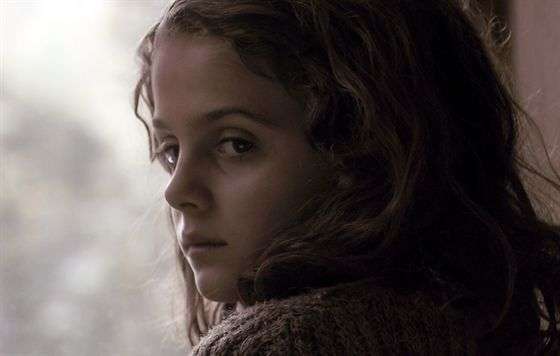CHRIS KNIPP'S SFIFF COVERAGE ON FILMLEAF
HERE.
 GRETA ZUCCHERI MONTANARIFlawed telling of a horrific story
GRETA ZUCCHERI MONTANARIFlawed telling of a horrific storyBetween September 29 and October 5 1944 from Monte Sole, an area of the Appenine Mountains near Bologna, a Nazi SS. officer named Weder reported "the execution of 728 bandits," according to one writer; most accounts say the actual number was 770. The victims in fact were simply villagers -- women, children and old men for the most part -- massacred in the Marzabotto incident, an act of vicious revenge carried out after the Italian partisans in the region had killed a few German soldiers and it was suspected that the locals were protecting them.
Diritti meticulously builds up his picture of the period and the people with a large and talented cast speaking in Bolognese dialect so remote from standard Italian the film is subtitled for Italian viewers. This is a story never told on film before, an eye opener for anyone and a deeply moving story for Italians:
L'uomo che verrà was a sensation at last year's Rome Film Festival, where it won both the grand jury prize and the audience award. It is powerful festival material.
Precise realism and a harrowing viewing experience as the horrific murders of the innocent are depicted in a prolonged sequence do not save the film, however, from a measure of sentimentalism and artificiality that grows out of the loving cameos of villagers and picturesque scenes that romanticize their harsh life whether in dazzling winter snow or in a summer of bursting flowers and CGI lightening bugs.
The villagers are mostly farmers whose rustic charm and simplicity director Diritti heightens. There are various points of view presented, though only Italian; the German dialogue is not even translated. At the center of the tale is an eight-year-old girl of preternatural beauty, Martina (Greta Zuccheri Montanari), who wanders around freely, miraculously managing to escape alive. She has already gone mute after seeing a brother stillborn, but ends by saving another newborn male child born at a time of horror. Her mother and father have been killed. Lead actress Maya Samsa (central in Bellocchio's
Good Morning, Nightt) plays Martina's mother Lena, beautiful too but weary. One can wonder at the interiors, the clothes, the rangy boys with gaunt but handsome faces, the priests, the schoolteachers, the toothless old men, evoking Rossellini and Pasolini -- but, alas, with a mainstream touch, and looks outstrip words when some speeches are wooden or conversations lack natural rhythm. This is closer to the Taviani brothers of
La notte di San Lorenzo. -- another tale of Italian villagers fleeing Nazis -- but without that film's clearcut narrative trajectory.
The difference here, commendable in principle yet creating structural weaknesses, is that Diritti eschews a discernible story line. The early sequences are far too random, and even as the terrible event comes on, scenes tend to jump forward without any particular logic. What's made clear -- though this too is a kind of idealization -- is that the country folk are proud and independent, having no more use for the fascists than for the Germans, considering war a foolish game for the rich and powerful. Yet it's also noted that the local partisan leader, "The Wolf," "can't lead" in the view of some because he refuses to engage in politics. The film's effort to dramatize a peasant point of view is admirable, but tends to sentimentalize. There is no attempt to provide a rounded picture of the Germans, or to explain what led up to their atrocity.
Italians sometimes complain their cultural heritage is so rich it's stifling, leaving them with nothing new to say. Some of their contemporary art suffers from refinement of technique; it's too steeped in tradition to move forward. Diritti's film faces that problem. Furthermore, chronicling a very specific event from wartime Italian history about which feelings are intense leaves even less wiggle room. Andrzej Wajda encountered the same problem with his
Katyn.
Seen at the San Francisco International Film Festival 2010, where the digital projection -- ironically because much of the cinematography is beautiful -- further heightened the digital camerawork's flat lighting effects. As
Variety reviewer Jay Weissberg wisely comments, the use of a children's choir for background tips the scale dangerously into sentimentality, especially given the use of a mute girl as the central figure. Diritti wrote, directed, and edited. Diritti's 2005 feature,
The Wind Blows Round, was well received.





